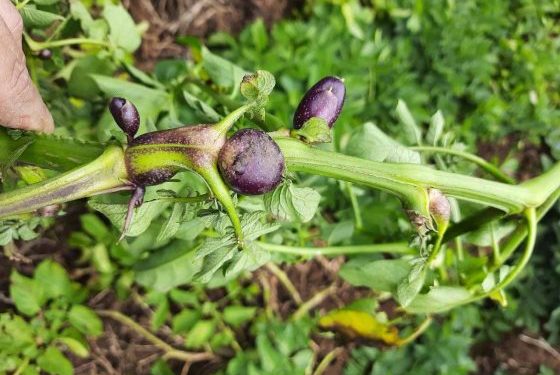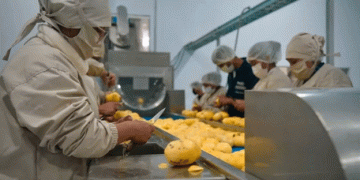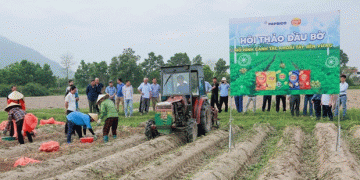#Paratrioza #potatocrops #Colombia #agriculturalsolutions #Pyriproxyfen #Olzo #MIP #integratedpestmanagement #farmers #agronomists #agriculturalengineers #farmowners #scientists #researchanddevelopment
Potato farmers in Colombia, particularly in the Department of Nariño, are facing a growing threat from the Paratrioza pest, which causes significant damage to potato crops. To address this issue, two research and development projects were conducted to evaluate the effectiveness of two products from the portfolio of a leading agricultural solutions provider, Pyriproxyfen 100 EC and Olzo 300 SC. This article will discuss the results of these projects and the potential of these products in managing Paratrioza infestation in potato crops.

According to recent data, the damage caused by Paratrioza in potato crops can be severe, with symptoms such as upper leaflets rolled, short internodes, thickening of knots, formation of aerial tubercles, browning of internal tissues of the tuber, and premature death of plants. The Department of Nariño is an important potato-producing area in Colombia, and there is a high possibility of the Paratrioza problem expanding in this region.
To manage the Paratrioza infestation, two products from the portfolio of a leading agricultural solutions provider were evaluated – Pyriproxyfen 100 EC and Olzo 300 SC. Pyriproxyfen 100 EC is an investigative product that has shown promising results in controlling Psyllids in other crops, while Olzo 300 SC is in the process of obtaining registration for said pest.
The research and development projects evaluated two important potato-producing localities in the Colombian region with a high presence of pests in different stages. The results showed that Pyriproxyfen 100 EC and Olzo 300 SC effectively managed Paratrioza infestation in potato crops, with minimal negative impacts on the environment and human health. These products are also suitable for rotation for MIP (Integrated Pest Management) practices.
Paratrioza infestation can cause significant damage to potato crops in Colombia, particularly in the Department of Nariño. However, there are promising solutions available, such as Pyriproxyfen 100 EC and Olzo 300 SC. These products have shown to be effective in managing Paratrioza infestation, and their suitability for MIP practices makes them a valuable addition to the toolbox of potato farmers, agronomists, agricultural engineers, farm owners, and scientists working in agriculture.
In this sense, they evaluated 2 important potato-producing localities in the Colombian region and with a high presence of pests in different stages:
Location I. Guaracal is a village in the municipality of Potosí. Guaracal farm.
Geographic location: Latitude 0.80427 and Longitude -77.73480 altitude 2753 masl
| Trat. | Product | Active Ingredients | Dose kg-L/ha | dose (kg-L/200 L) |
| 1 | Pyriproxyfen 100EC | Pyriproxyfen 100gr/L | 0.4 | 0.200 |
| 2 | Pyriproxyfen 100EC | Pyriproxyfen 100g/L | 0.5 | 0.250 |
| 3 | Olzo 300SC | Tiametoxam 200 gr/L + Clorantraniliprole 100 gr/L | 0.2 | 0.100 |
| 4 | Olzo 300SC | Tiametoxam 200 gr/L + Clorantraniliprole 100 gr/L | 0.3 | 0.150 |
| 5 | Localidad 1 | Diflubenzuron 400g/L + Lambda-cyhalotrin100 g/L | 0.3 | 0.150 |
| Localidad 2 | Fentoato 500g/L | 0.5 | 0.250 |
Locality II. Municipality of Cordoba, Santander village. Santander Estate.
Geographic location: Latitude 0.87055 and Longitude -77.53239 altitude 2793 masl
Time of application: upon detection of the first nymphs.
Application frequency: 8 days
Number of applications: 2
TABLE 1. TREATMENTS
A volume of 400 L/ha was simulated
Table 1 shows the treatments with their different doses; Treatment 5 shows the two localities with the commercial treatment used in each locality.






